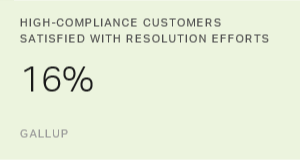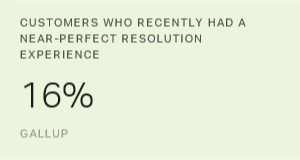The video of a United Airlines passenger being forcibly removed from an overbooked plane has sparked massive outrage over the past week. The disturbing images seem to have dominated social media.
In the aftermath, and as tempers cool, it's important for business leaders to understand what inspired the outrage and why so many people rallied to the passenger's side. I see three causes:
-
As consumers, we have all felt a lack of control over one situation or another -- particularly those of us who fly frequently -- and could easily imagine ourselves in that situation
-
Low engagement among airline customers in general, and probably among United fliers in particular
-
A complete lack of any empathy from United leaders just after the incident -- that is, until public outcry and stock declines caused them to reconsider their original position
What I find interesting is that this incident comes at a time when more companies are professing that they want a culture of customer centricity. In fact, in February of this year, United proudly announced its "Shared Purpose" initiative, which defines what they desire to be -- and it's unintentionally laughable now.
The company's Shared Purpose is: Connecting people. Uniting the world. Well, it has definitely united the world -- against it. And one of United's "Shared Values," We Fly Friendly, has become a punchline.
I'm sure many executives reading this also have similar purpose or mission statements about what their company is and what it aspires to be. But what should leaders do today to ensure their company is actually "living" its purpose?
Analyze what your customers are saying about you right now. Look at your social media pages, complaints and customer data for recurring themes that are inconsistent with your aspirational purpose. Act quickly to fix the problems that can be easily addressed, and then prioritize the rest.
Ask your people for ideas on how to ensure you are being customer centric. One client of mine asked for suggestions and received over 900 submissions for improvement ideas. Again, act on the ideas that can be easily addressed, and prioritize the rest.
Conduct a full audit of rules. Then use predictive analytics to determine which rules are least customer centric and assess the impact of changes to those rules.
These actions, if taken now, signal to employees and customers that leaders take their company purpose and organizational culture seriously -- and that they aren't just words on a website, but rather the way leaders expect everyone in their organization to act.




